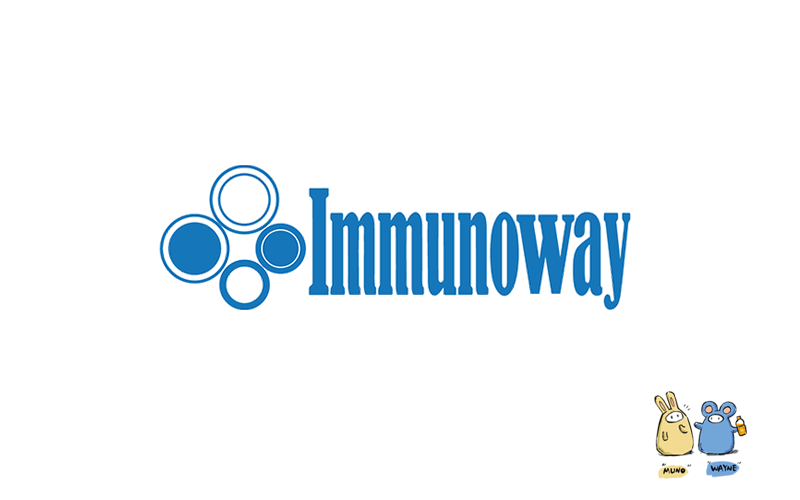
Catalog: YN0303
Size
Price
Status
Qty.
200μL
$450.00
In stock
0
100μL
$280.00
In stock
0
40μL
$150.00
In stock
0
Add to cart


Collected


Collect
Main Information
Target
EDAR
Host Species
Rabbit
Reactivity
Human, Mouse
Applications
WB, ELISA
MW
49kD (Observed)
Conjugate/Modification
Unmodified
Detailed Information
Recommended Dilution Ratio
WB 1:500-2000; ELISA 1:5000-20000
Formulation
Liquid in PBS containing 50% glycerol,0.5% BSA and 0.02% sodium azide.
Specificity
EDAR Polyclonal Antibody detects endogenous levels of protein.
Purification
The antibody was affinity-purified from rabbit antiserum by affinity-chromatography using epitope-specific immunogen.
Storage
-15°C to -25°C/1 year(Do not lower than -25°C)
Concentration
1 mg/ml
MW(Observed)
49kD
Modification
Unmodified
Clonality
Polyclonal
Isotype
IgG
Related Products
Antigen&Target Information
Immunogen:
Synthesized peptide derived from human protein . at AA range: 50-130
show all
Specificity:
EDAR Polyclonal Antibody detects endogenous levels of protein.
show all
Gene Name:
EDAR DL
show all
Protein Name:
Tumor necrosis factor receptor superfamily member EDAR (Anhidrotic ectodysplasin receptor 1) (Downless homolog) (EDA-A1 receptor) (Ectodermal dysplasia receptor) (Ectodysplasin-A receptor)
show all
Background:
This gene encodes a member of the tumor necrosis factor receptor family. The encoded transmembrane protein is a receptor for the soluble ligand ectodysplasin A, and can activate the nuclear factor-kappaB, JNK, and caspase-independent cell death pathways. It is required for the development of hair, teeth, and other ectodermal derivatives. Mutations in this gene result in autosomal dominant and recessive forms of hypohidrotic ectodermal dysplasia. [provided by RefSeq, Jul 2008],
show all
Function:
developmental stage:Found in craniofacial tissues from embryonic day 42-53. Expressed in fetal skin 11 and 15 weeks after gestation.,Disease:Defects in EDAR are a cause of ectodermal dysplasia anhidrotic (EDA) [MIM:224900]; also known ectodermal dysplasia hypohidrotic autosomal recessive (HED). Ectodermal dysplasia defines a heterogeneous group of disorders due to abnormal development of two or more ectodermal structures. EDA is characterized by sparse hair (atrichosis or hypotrichosis), abnormal or missing teeth and the inability to sweat due to the absence of sweat glands.,Disease:Defects in EDAR are the cause of ectodermal dysplasia type 3 (ED3) [MIM:129490]; also known as ectodermal dysplasia hypohidrotic autosomal dominant or EDA3. ED3 is an autosomal dominant condition characterized by hypotrichosis, abnormal or missing teeth, and hypohidrosis due to the absence of sweat glands.,Function:Receptor for EDA isoform A1, but not for EDA isoform A2. Mediates the activation of NF-kappa-B and JNK. May promote caspase-independent cell death.,polymorphism:Genetic variation in EDAR is associated with hair morphology type 1 (HRM1) [MIM:612630]; also called variation in hair thickness. Besides skin color and facial features, hair morphology is one of the most distinctive traits among human populations, and classical classification of human population is based on such visible traits.,similarity:Contains 1 death domain.,similarity:Contains 3 TNFR-Cys repeats.,subunit:Binds to EDARADD. Associates with TRAF1, TRAF2, TRAF3 and NIK.,tissue specificity:Detected in fetal kidney, lung, skin and cultured neonatal epidermal keratinocytes. Not detected in lymphoblast and fibroblast cell lines.,
show all
Cellular Localization:
Membrane ; Single-pass type I membrane protein .
show all
Tissue Expression:
Detected in fetal kidney, lung, skin and cultured neonatal epidermal keratinocytes. Not detected in lymphoblast and fibroblast cell lines.
show all
Research Areas:
>>Cytokine-cytokine receptor interaction ;
>>NF-kappa B signaling pathway
>>NF-kappa B signaling pathway
show all
Signaling Pathway
Reference Citation({{totalcount}})
Catalog: YN0303
Size
Price
Status
Qty.
200μL
$450.00
In stock
0
100μL
$280.00
In stock
0
40μL
$150.00
In stock
0
Add to cart


Collected


Collect
Recently Viewed Products
Clear allPRODUCTS
CUSTOMIZED
ABOUT US
Toggle night Mode
{{pinfoXq.title || ''}}
Catalog: {{pinfoXq.catalog || ''}}
Filter:
All
{{item.name}}
{{pinfo.title}}
-{{pinfo.catalog}}
Main Information
Target
{{pinfo.target}}
Reactivity
{{pinfo.react}}
Applications
{{pinfo.applicat}}
Conjugate/Modification
{{pinfo.coupling}}/{{pinfo.modific}}
MW (kDa)
{{pinfo.mwcalc}}
Host Species
{{pinfo.hostspec}}
Isotype
{{pinfo.isotype}}
Product {{index}}/{{pcount}}
Prev
Next
{{pvTitle}}
Scroll wheel zooms the picture
{{pvDescr}}



















